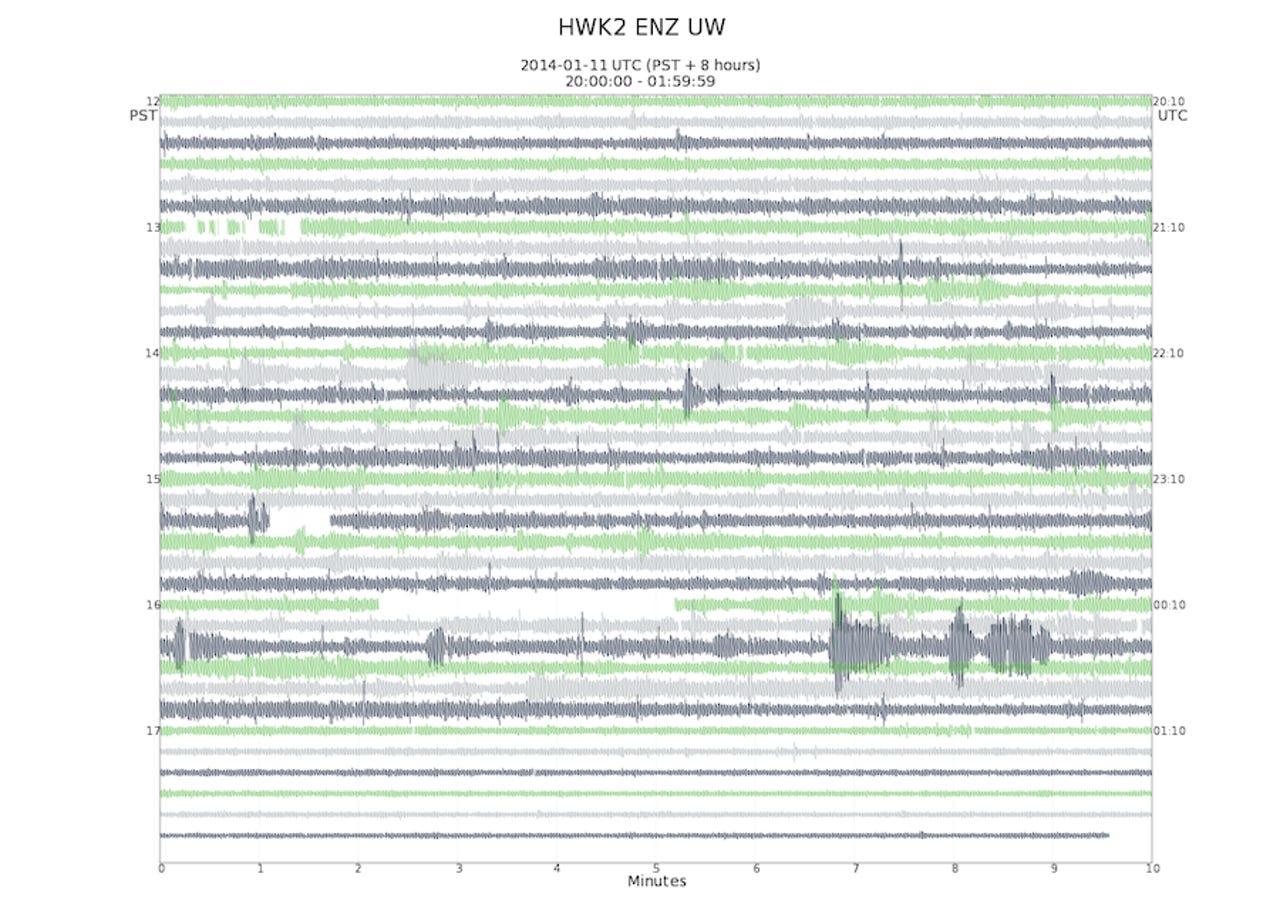Innovation
What are seismometers doing at this Sunday's Seattle Seahawks game?
To test earthquake monitoring equipment, three seismograms (or Hawk-O-Grams) have been installed in CenturyLink Field to measure the tremors generated by raucous Seahawks fans.


UPDATE: Here is a Hawk-O-Gram from the Jan. 19 game and its seismic analysis.
Seahawks fans jumping up and down during Monday night’s 22-yard Michael Bennett fumble return for a touchdown registered about a magnitude 1 or 2 earthquake.
The tremor was caught on the University of Washington’s seismometer, which was about a block away. And apparently, this wasn’t the first time. The same seismometer captured Marshawn Lynch’s “Beast Quake” after a 67-yard touchdown run that clinched a playoff victory over the Saints three years ago, Seattle Times reports.
After December’s excitement, UW seismologists installed two near real-time seismic monitors at CenturyLink Field. During the Jan. 11 game against the Saints (again), the largest jolt followed the game-clinching touchdown. “It’s a good test for the network to make sure we can do a good job in an earthquake,” says John Vidale of UW’s Pacific Northwest Seismic Network (PNSN), which is responsible for monitoring quakes in the entire Oregon-Washington region.
Following last Saturday's win, UW seismologists installed a third seismogram -- dubbed Hawk-O-Grams (pictured) -- at the 67,000-seat stadium, the first to boast its own seismic station, New Scientist reports.
To be clear, jumping and stomping fans didn’t cause an earthquake in the plate tectonics kind of way, and the crowd-generated spikes aren’t near the strength of a real earthquake. (The seismometers also picked up local traffic, trains, and the stadium’s heating and cooling pumps.) But the exercise could help test new monitoring tools and help refine the network’s website: pnsn.org/seahawks, where fans can stream live seismic readings. It’ll be especially useful to practice interpreting data in real-time and relaying that information for the public.
For example: website traffic swelled from a normal 2,000 to 3,000 visits up to 12,500 visits, New Scientist reports. “I was watching the traffic from the CenturyLink Field press box and saw the web slow way down as tens of thousands of requests for seismograms were arriving almost simultaneously,” software engineer Jon Connolly says in a news release. “I was able to tune and rebalance how the requests were managed and we learned a lot about how to reorganize some services to be ready for the next big earthquake or volcanic eruption.”
PNSN's Steve Malone adds: “We haven't had even a moderate-sized earthquake in several years, so this has been a great fire drill... The experiment simulates what we'd do in a real earthquake almost exactly."
The network’s next test will be a biggie. Seismologists expect another Beast Quake during this Sunday’s NFC Championship Game against the San Francisco 49ers -- which determines who goes to the Super Bowl. Relatedly, Seahawks fans (known as 12th Man) set a Guinness World Record for crowd noise, registering 137.6 decibels during that same December game.
Full disclosure: I’ll be cheering for the 49ers. Also, it's the 20th anniversary of the Northridge Earthquake.
[UW News via New Scientist]
Image: Saints-Seahawks Game / PNSN
This post was originally published on Smartplanet.com